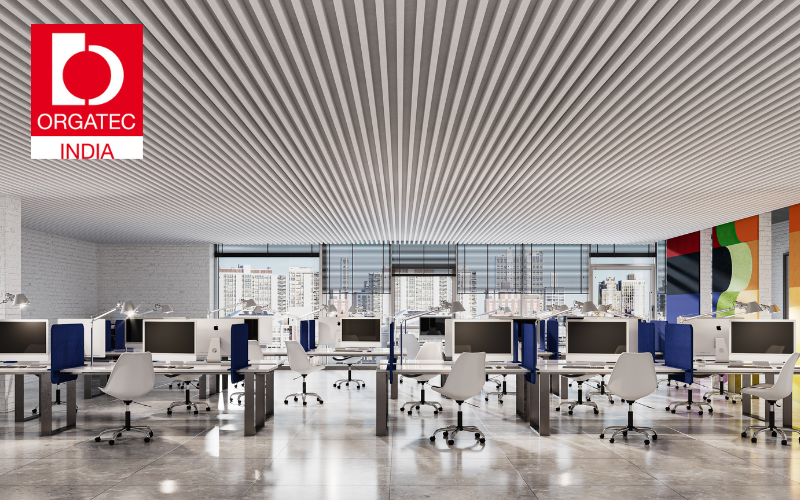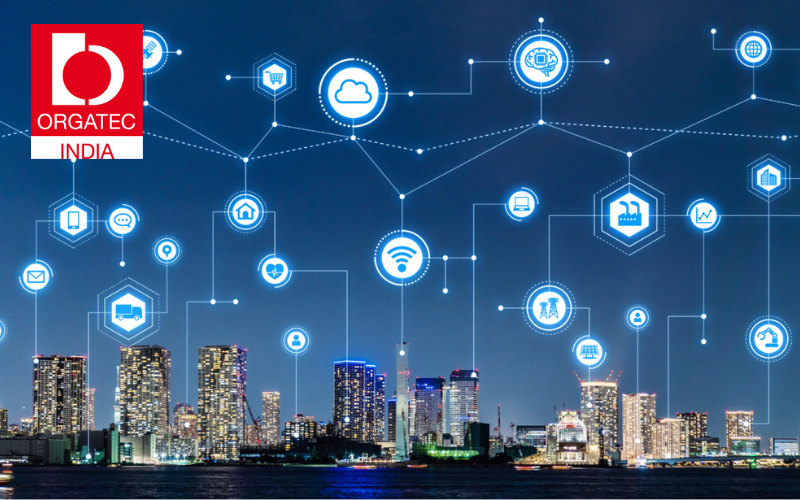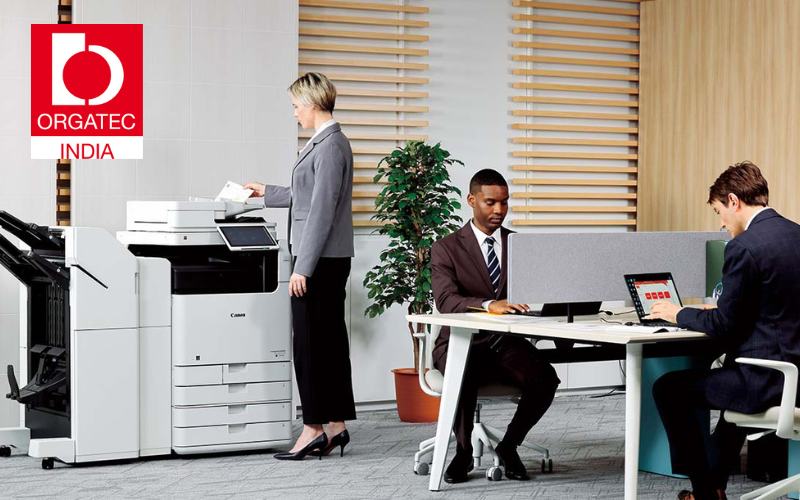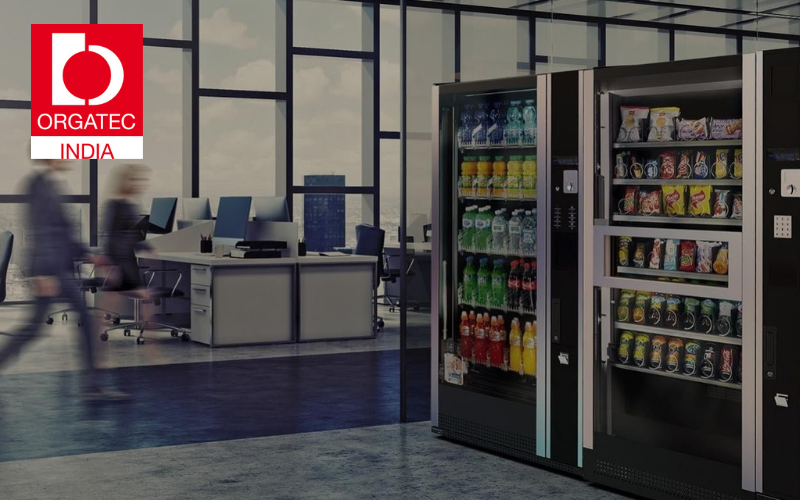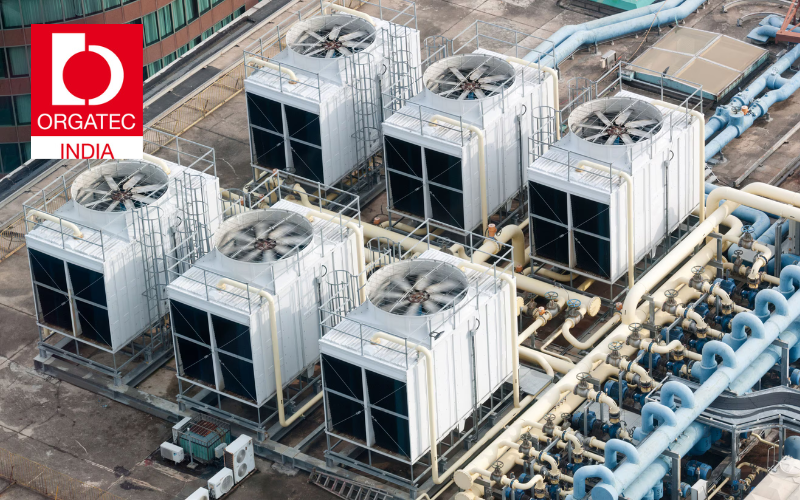

Blog Details
ORGATEC India 2025
10 Must-Have Technologies for a Smart and Sustainable Office in 2025
Share Page
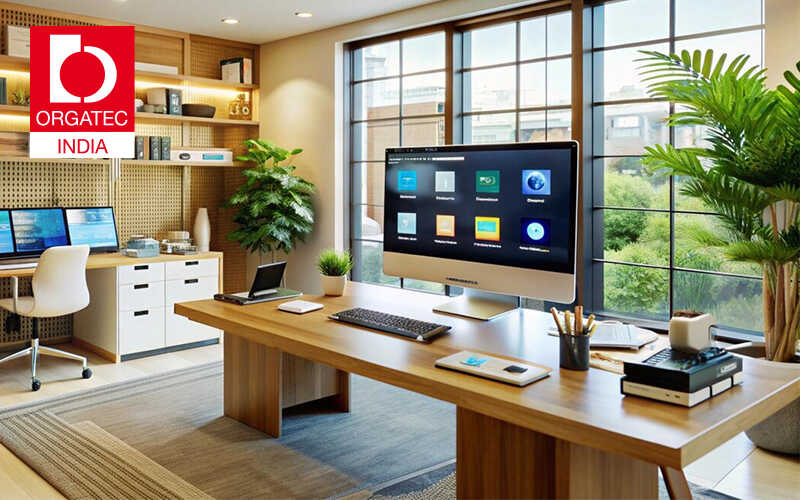
As businesses rapidly adapt to the evolving demands of modern workspaces, the idea of creating smart and sustainable offices has become more relevant than ever. By 2025, organizations will prioritize optimizing office space, enhancing employee productivity, and reducing their carbon footprint. Leveraging the right technologies will be critical in achieving these goals. Whether you’re crafting a new office design or upgrading your existing setup, the following 10 must-have technologies will revolutionize office environments and set benchmarks for innovation and sustainability.
1. Building Management Systems (BMS)
A Building Management System (BMS) is the backbone of any smart office setup. This technology integrates and monitors various mechanical and electrical systems, such as HVAC (Heating, Ventilation, and Air Conditioning), lighting, and energy usage. BMS uses real-time data and automation to control these systems efficiently. For instance, heating and cooling can be adjusted based on occupancy, reducing energy waste and enhancing employee comfort.
Modern BMS also incorporates energy analytics, which helps facility managers identify inefficiencies and implement corrective measures. By adopting BMS, businesses not only lower energy consumption but also make strides toward meeting sustainability goals.
Explore smart energy solutions by Honeywell Building Management Systems to optimize office operations.
2. Smart Lighting Systems
Lighting accounts for a significant portion of energy usage in office spaces. Smart lighting systems are designed to maximize energy efficiency while improving employee comfort and productivity. These systems use motion sensors, daylight harvesting, and automated dimming to adapt to real-time conditions. For example, lights automatically dim or turn off in unoccupied areas, reducing unnecessary energy consumption.
Additionally, integrating smart lighting with other systems like IoT and BMS can further optimize energy use. According to the International Energy Agency (IEA), adopting smart lighting can cut lighting energy consumption by 40-60%.
how Philips Lighting Solutions is driving energy-efficient innovations in offices.
3. Height-Adjustable Desks & Ergonomic Furniture
The importance of ergonomics in the workplace cannot be overstated. Height-adjustable desks and other ergonomic furniture enable employees to switch between sitting and standing positions, reducing the health risks associated with sedentary behavior. This flexibility has been linked to increased productivity and improved well-being.
Smart furniture now integrates sensors that monitor posture and provide recommendations to encourage healthier working habits. For instance, a sensor in the desk might remind an employee to adjust their position or take a break to stretch. Such innovations are reshaping the workspace into a healthier environment for employees.
Discover ergonomic office furniture from Steelcase India.
4. Cloud-Based Collaboration Tools
The rise of hybrid work models has made cloud-based collaboration tools indispensable for businesses. Platforms like Microsoft Teams , Slack, and Google Workspace enable seamless communication, file sharing, and project management, regardless of employee location.
These tools foster collaboration between in-office and remote teams, ensuring smooth workflows and effective communication. Cloud platforms also support advanced security measures, safeguarding sensitive company data. As hybrid work becomes the norm, cloud-based solutions will remain a cornerstone of office technology.
Stay ahead with Microsoft Office 365 solutions for collaborative work environments.
5. Energy Management Systems (EMS)
To further sustainability efforts, businesses are increasingly relying on Energy Management Systems (EMS). These systems provide real-time monitoring and analysis of energy usage, helping organizations identify areas of inefficiency.
EMS not only helps in reducing operational costs but also ensures compliance with green building certifications such as LEED. By leveraging EMS, companies can make informed decisions about resource allocation, contributing to a sustainable future.
Partner with Schneider Electric for advanced energy management solutions.
6. IoT Devices for Workspace Optimization
The Internet of Things (IoT) is transforming workplaces by connecting devices and systems to gather actionable insights. IoT sensors, such as occupancy detectors and smart thermostats, help optimize workspace usage and energy consumption.
For example, occupancy sensors can analyze foot traffic in meeting rooms, ensuring optimal space utilization. Similarly, smart thermostats can adjust temperature settings based on real-time occupancy data. These innovations not only improve operational efficiency but also enhance employee comfort.
Read how Tata Communications is driving IoT innovations in workspace optimization.
7. 5G Connectivity
As offices embrace digitization, 5G connectivity has become crucial for ensuring fast and reliable communication. With its ultra-fast speeds and low latency, 5G supports real-time collaboration, seamless video conferencing, and data-heavy applications.
For organizations relying on cloud computing and IoT devices, 5G ensures smooth operations without network interruptions. This technology is set to revolutionize connectivity in smart offices.
Explore Reliance Jio’s 5G solutions for office connectivity.
8. Smart Access Control & Security Systems
Ensuring the security of office spaces has become increasingly important. Smart access control systems use biometric authentication, RFID cards, or mobile apps for seamless and secure entry.
Integrated with video surveillance and IoT sensors, these systems provide comprehensive security without disrupting the user experience. They also offer advanced features like real-time monitoring and visitor management.
Discover modern security solutions from Godrej Security Solutions for smart offices.
9. Hybrid Work Technologies
The shift to hybrid work models requires offices to integrate tools that cater to both in-office and remote employees. Technologies like video conferencing systems, shared virtual whiteboards, and project management platforms ensure seamless collaboration across teams.
These solutions improve efficiency and offer employees the flexibility to work from any location, making them essential for modern workspaces.
Transform your hybrid workspace with Cisco Webex collaboration tools.
10. Sustainable Office Materials
True sustainability goes beyond technology—it also involves the materials used in office design. From recycled desks and chairs to energy-efficient lighting and insulation, sustainable office materials are critical for reducing environmental impact.
Offices that prioritize sustainability also benefit from improved indoor air quality, better energy conservation, and reduced waste. These efforts align with the global push toward eco-conscious commercial interiors.
Explore GreenPro-certified sustainable solutions by Godrej Interio.
Why Choose ORGATEC India for Smart Office Solutions?
As India’s premier commercial interiors exhibition, ORGATEC India 2025 is the ultimate platform for exploring the latest innovations in workspace design, office furniture, and smart office technologies. The event will host industry leaders and showcase transformative solutions for modern workplaces.
Join us from November 4–6, 2025, at the Jio World Convention Centre, Mumbai, to discover how these technologies are shaping the future of work.
Become a part of this revolution—Become an Exhibitor.
To know more about ORGATEC India, visit ORGATEC India website.

More Blogs

